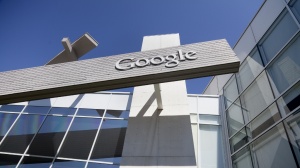6 Trends For Retailers To Watch In 2018
Retail is changing, a fact which presents opportunities and risks - here's what you need to know.

In March 2018, we were excited to be invited to talk at ShopTalk 2018 in Las Vegas. ShopTalk is the world’s largest retail and e-commerce conference, bringing together leaders, influencers and decision makers from largest retailers in the world with the aim of connecting them with the most innovative technologies and companies in retail.
Over the course of 4 packed days, hundreds of industry insiders shared their views of the challenges the industry faces today, the opportunities emerging technology is bringing, and their own personal vision for what the future of retail looks like.
This is my opinion on are the main topics that I feel had consensus throughout the conference and resonate strongly with me as well;
Change is the only constant
This has been said for years but may have been truer for other markets than retail. But now, it’s different.
Retailers and the whole retail ecosystem around them, are waking up to the realisation that their market is no longer going through slow cycles of change, but instead evolution has become fluid, constant and relentless and the only way to survive and thrive in this new world is to put change and adaptation into the DNA of the organisation i.e. make change the new constant.
What’s most important and profound about this principle is that the customer has already come to expect it, will very soon begin to demand it, and will then not have it any other way.
Convenience is the new Loyalty
For many years, the price and quality of products was the top priority for retailers. Having heard industry leaders speak, however, it is clear that convenience and customer experience is now at the forefront of their minds. At ShopTalk there was a lot of buzz around concepts like Amazon Go, Shipt and our Saturn Express project.
The focus was on how these solve a customer convenience need and improve the customer experience as a result of that.
Of course, these methods are still new and perhaps even far-fetched concepts to some retailers, but there was a clear understanding in the air that it doesn’t take long for concepts like these to become the new norm that customers expect.
For example, many retailers resisted taking card payments for small purchases for a long time, but today, if you don’t offer the payment method that is most convenient for each individual customer, you risk them voting with their feet and going elsewhere.
Every Byte Counts
A lot of the talk in Vegas was around personalisation and loyalty. While a more data-driven and personalised shopping experience is easier to deliver in e-commerce – to the point that it is almost expected by online shoppers – offering it in stores presents a different set of challenges.
Online we all leave a ‘data exhaust’ that is useful and valuable for e-commerce, but offline retailers need to think about ways to capture data about shopper behaviour that allows them to personalise the customer experience.
What was interesting was to hear that while Daniel Alegre, president of retail and shopping at Google, argued that “Data is the backbone of retail,” others also warned about the potential pitfalls there for f C-Suite decision making, as Tim Zawislack of Delta Galil said: "You can reach a point where you're getting too caught up in data and not seeing the forest from the trees."
Mobile: the greatest asset not on your balance sheet
While online and offline teams are working more closely than ever before, it was nice to see that the mobile channel is also finally being treated as a core part of the business for most leading retailers.
Studies show that 83% of customers carry and use their smartphone while shopping, and retailers are now recognising the other roles smartphones can play in the customer experience.
There was a lot of fascinating talk around virtual reality and augmented reality, and how they can be used to make the in-store experience more engaging. However, removing the ‘pain-points’ from the customer journey was perhaps the main recurring theme, particularly utilising customers’ own devices for self-service and mobile checkout.
The best part about mobile driven experiences is that the shopper brings the most important infrastructure with them in their own pocket, a joy for the CFO and his balance sheet.
Physical retail to Death: Not Today
For a while now the bricks and mortar channel a has been portrayed as a doom and gloom story, because of course it is sad to see hundreds of people lose their jobs while seeing these once much loved and dreamt about brands, like Toys R Us or Maplin, disappear from the high-street.
However, what was clear from ShopTalk is that there is very fundamental and game-changing role for physical retail to play in the coming years, but the stores themselves will need to transform entirely to be able to live up to these requirements.
This can thus be a tremendous advantage for retailers who have existing store networks, and can transform them into these hubs of customer experience and engagement while still being a source of instant gratification and joy.
However, those who fail to transform their stores fast enough will fall by the wayside, because the pure-play eCommerce giants have recognised this opportunity well too and are pouncing on it, as we see in the cases of Alibaba, Amazon, JD.com and others. As I heard one commentator put it: “Retail isn’t dead – but boring retail is.”
Long live the Customer
The customer is King and must be treated like one, no matter how many you have. The idea that each customer is an individual and must be catered for separately and exclusively as an individual is cementing itself within the industry.
Whether this be on the Omni-channel front in connecting their online and physical retail channels so that there is essentially no barrier between the two, in regards to services, experience or personalisation. The issue here comes again in the stores where there are limited resources in terms of labour, space and infrastructure.
This will lead to further adoption of in-store technologies that can be viable for retailers with massive store footprints while reducing on any of those three factors.
This was clearly evident when I saw any retailer talk about how they want to serve their customer better and it makes sense, the more resource they can free up, the better they can cater to each and every customer by giving them the attention and experience they deserve.
Mustafa Khanwala is the founder and CEO of MishiPay.
Thanks for signing up to Minutehack alerts.
Brilliant editorials heading your way soon.
Okay, Thanks!


